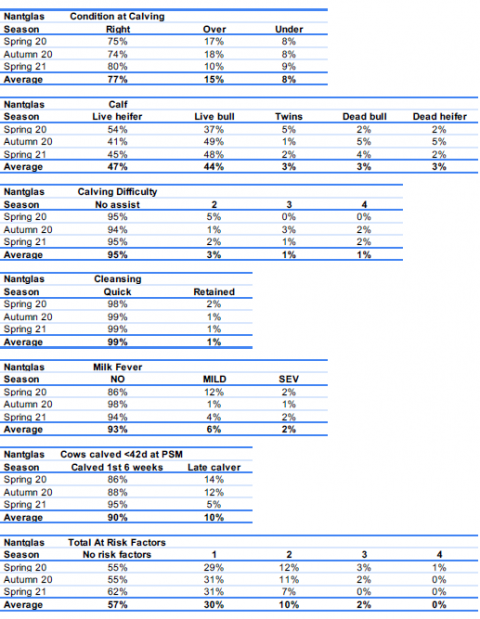Nantglas Project Update: Demonstration site reaches 91% 6-week calved rate
Nantglas, run by Iwan Francis, one of the four Farming Connect’s dairy demonstration sites across Wales, is targeting two 10-week calving blocks. One of the key performance indicators (KPI) for the farm was >90% 6-week calved rate. In spring 2021, 91% of the herd calved within the first six weeks of calving, an increase of 20% from 2020 spring calving. Therefore, what changes have been implemented?
Kate Burnby, the specialist working with Iwan, suggested a planned mating programme for heifers, including strategic prostaglandin, which helped with front-end loading the calving pattern. Tighter calving for heifers ensured better socialising, but also as heifers tend to take around nine days longer to get in-calf, this ensured heifers kept the calving interval down. Not only has this benefited in the short term, but Kate also expects the full benefit of this will continue to be realised well into the future. For example, the easier management of an early and tight born heifer replacement group and they will also likely calve at 24 months old (instead of the historical range of 22-24 months).
Heat detection collars have been a great asset to Iwan, being reliable and effective, which has helped maintain high submission rates with less effort than previously, which was with only tail paint. Empty rates have not reduced as much as hoped so far - there may be room for improvement with sweeper bull management/fertility.
Measuring and monitoring at-risk cows e.g. metabolic problems, late calvers and calving problems has shown significant differences in in-calf rates for these groups. Table 1 includes the calving records that Kate has analysed from Iwan’s calving records from that start of the project in late 2019.
Table 1. Calving records for Nantglas since late 2019.
For spring 2020, Nantglas recorded around 45% at-risk cows, this has reduced to 38% in 2021 with less severe cases, including an 8% drop in milk fever cases. This evidence strongly backs up the strategies for continued improvement i.e. minimise at-risk cows by preventing the conditions that cause them by maintaining appropriate cow condition, effective magnesium supplementation, front end loading with heifers and aim for easy and early calving.

